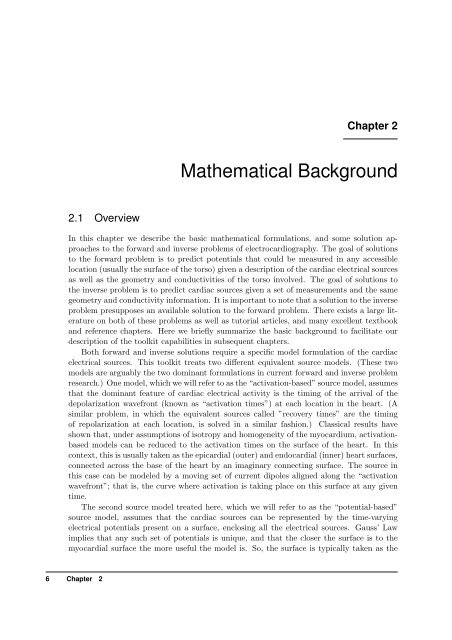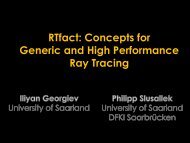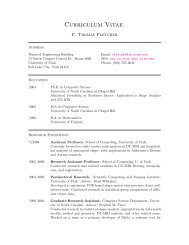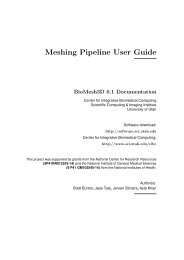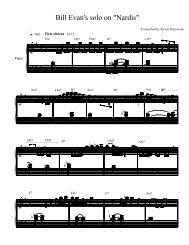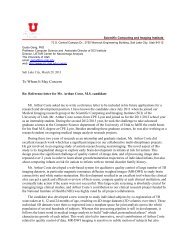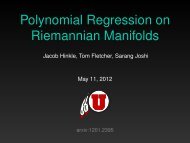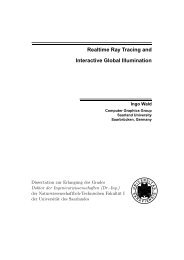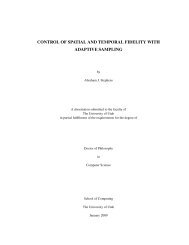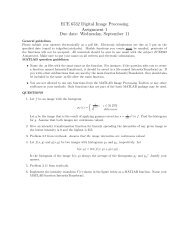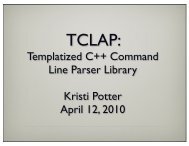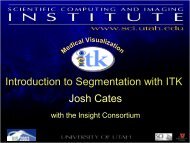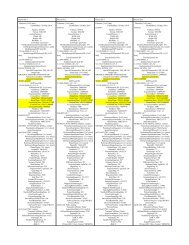SCIRun Forward/Inverse ECG Toolkit - Scientific Computing and ...
SCIRun Forward/Inverse ECG Toolkit - Scientific Computing and ...
SCIRun Forward/Inverse ECG Toolkit - Scientific Computing and ...
Create successful ePaper yourself
Turn your PDF publications into a flip-book with our unique Google optimized e-Paper software.
Chapter 2<br />
Mathematical Background<br />
2.1 Overview<br />
In this chapter we describe the basic mathematical formulations, <strong>and</strong> some solution approaches<br />
to the forward <strong>and</strong> inverse problems of electrocardiography. The goal of solutions<br />
to the forward problem is to predict potentials that could be measured in any accessible<br />
location (usually the surface of the torso) given a description of the cardiac electrical sources<br />
as well as the geometry <strong>and</strong> conductivities of the torso involved. The goal of solutions to<br />
the inverse problem is to predict cardiac sources given a set of measurements <strong>and</strong> the same<br />
geometry <strong>and</strong> conductivity information. It is important to note that a solution to the inverse<br />
problem presupposes an available solution to the forward problem. There exists a large literature<br />
on both of these problems as well as tutorial articles, <strong>and</strong> many excellent textbook<br />
<strong>and</strong> reference chapters. Here we briefly summarize the basic background to facilitate our<br />
description of the toolkit capabilities in subsequent chapters.<br />
Both forward <strong>and</strong> inverse solutions require a specific model formulation of the cardiac<br />
electrical sources. This toolkit treats two different equivalent source models. (These two<br />
models are arguably the two dominant formulations in current forward <strong>and</strong> inverse problem<br />
research.) One model, which we will refer to as the “activation-based” source model, assumes<br />
that the dominant feature of cardiac electrical activity is the timing of the arrival of the<br />
depolarization wavefront (known as “activation times”) at each location in the heart. (A<br />
similar problem, in which the equivalent sources called ”recovery times” are the timing<br />
of repolarization at each location, is solved in a similar fashion.) Classical results have<br />
shown that, under assumptions of isotropy <strong>and</strong> homogeneity of the myocardium, activationbased<br />
models can be reduced to the activation times on the surface of the heart. In this<br />
context, this is usually taken as the epicardial (outer) <strong>and</strong> endocardial (inner) heart surfaces,<br />
connected across the base of the heart by an imaginary connecting surface. The source in<br />
this case can be modeled by a moving set of current dipoles aligned along the “activation<br />
wavefront”; that is, the curve where activation is taking place on this surface at any given<br />
time.<br />
The second source model treated here, which we will refer to as the “potential-based”<br />
source model, assumes that the cardiac sources can be represented by the time-varying<br />
electrical potentials present on a surface, enclosing all the electrical sources. Gauss’ Law<br />
implies that any such set of potentials is unique, <strong>and</strong> that the closer the surface is to the<br />
myocardial surface the more useful the model is. So, the surface is typically taken as the<br />
6 Chapter 2


